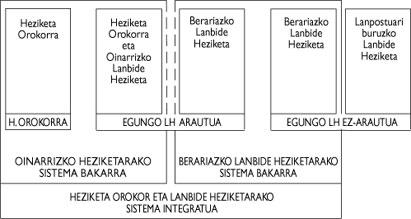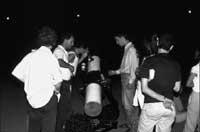Towards a universal scientific culture
1995/02/01 Sarasola Manech, Julen Iturria: Elhuyar aldizkaria
It is surprising to see that technical and scientific advances have placed man in a privileged position in the last years of the twentieth century, the knowledge of society in general about astronomy and science are the same as it had in the Middle Ages.
Although the affirmation that I have made seems courageous, it is so and they are an example of this the opinion on what happens when the bodies fall on the earth surface (different properties are applied to it depending on the mass of each body), on the movement of the Sun (for many it continues to revolve around the Earth) or on the Moon (it seems that it is floating in a fluid so that it does not fall).
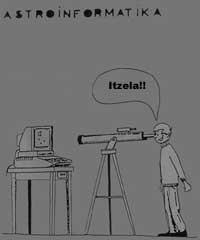
It is not surprising that a special attraction is generated for the youth, since they are handled with great security in computer programs and galactic games (or when in children’s cartoons are repeatedly mentioned to the population of “other worlds”, both black holes and laser beams) predictions of horoscopes, the existence of aliens and the effects of the full moon, for example.
All this shows that the eight years of compulsory basic education and the other four years of secondary education are not enough, especially in the scientific field. In our country, the education of science was limited to giving a series of formulations, all based on encyclopedic programs, but for what?... So that whoever supported him would come to the university and that whoever did not support him would abandon all the programs of young people who were on their way.
The introduction of astronomy so young (at age eight) and especially in the future D.B.H. (Compulsory Secondary Education - E.S.O. ), at 12/16 years old, is to ensure juvenile scientific education. In this way it should be considered as a final phase and not as a university education. Their goal is to know the universe, know where they should be located and locate with it... This change would also serve to assess science, especially in adolescents.
Astronomy that throughout history has contributed so much to the development of science today is not only a point of scientific research (the physics of particles and the state of matter at the beginning of the “Great Explosion”; the study of the evolution of stars; the learning of superconductors in alien conditions; etc. ), which is committed more than anyone to the education of universal scientific culture.
Today anyone has enough information about astronomy: the consequences of misuse of technology, the start of the so-called “greenhouse effect”, the appearance of the ozone hole, the disappearance of the planet’s green blanket, nuclear accidents and wars, chemical wars, oil spills that reach the marine plankton, the depletion of burned fossils, etc. All of them are topics that remind us that we are in danger of breaking the balance of the planet's biosphere.
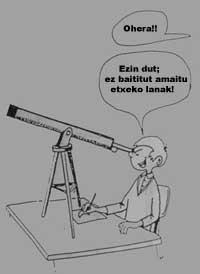
However, in our modern society, today we say that scientific culture is more fascinating and is a new creative. But not for those dramatic aspects, of course. The research of the Solar System through space probes and photographs that are not surprising (Saturn rings, satellites and atmosphere of Uranus, departure to meet the Halley comet, etc. ). ), Photographs sent by the Hubble Space Telescope (radio sources telling us that there are black holes, galaxies and “quasars” because they have never been seen from Earth, etc. ), have received less scientific journals, newspapers and television spaces, although they have often been sensationalized.
TV shows like “Cosmos”, sci-fi trends that are being introduced into children’s literature, cartoons, etc. If we add, it is no wonder that children and young people are increasingly interested in the distant. It is mysterious, but possible.
In fact, astronomy has an enormous influence on young people of all peoples (as integrative science, because those who are in adolescence can find connections in all fields of study, both in the exact and natural sciences, in the social sciences and in philosophy and in art), especially in those who feel some emotion for the cosmos.
The potential education of the teaching of astronomy (understanding that it is the evolution of human thought, that is, the idea of its universe throughout its history) is very great and serves as a guide to properly treat the misconceptions that occur in the evolution of children and young people.
We have four countries that teach astronomy in a differentiated way and as compulsory subjects in the second course: Uruguay, Russia, Germany and Greece. On other occasions, they are working on it and have advanced outreach programs such as planetariums and science museums (Poland, France, Finland, India, Japan, Paraguay, Mexico, USA, Brazil, Argentina, Israel, Bulgaria...).
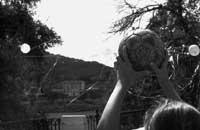
In Spain, those who had traditionally acquired an astronomical culture have been those who began to introduce astronomy in schools almost ten years ago (Catalonia and Valencia). At first in the afternoons as a workshop and later as a subject (E.A.T.P. ).
Today, thanks to the network created among astronomers, more and more students have the opportunity to learn astronomy, even if the teacher is self-taught (Madrid, Galicia, Andalusia and the Basque Country). In the French state there is the “Committee of Lieçons between Enseignements et Astronomes Clairaut (C.L.E.A. )” is the entity responsible for the training of the aforementioned teachers and for increasing the didactic curriculum of astronomy. To do this, edit a magazine and prepare several courses in summer.
In Spain, however, there are several permanent astronomical seminars. They depend on the University or the Department of Education and are holding sessions for the same purpose. It is at this time that the education system is changing, when it is becoming stronger. At this time very different offers will be made to students and astronomy will play an important role in science education.
For the same reason and with the same objective, the Santa María Foundation, with the theme of introduction to astrophysics, has organized three courses in collaboration with the Canary Institute of Astrophysics for teachers of Basic Education and Secondary Education in the Canary Islands.

Gai honi buruzko eduki gehiago
Elhuyarrek garatutako teknologia



